2 min read
Working Forests 101: The Importance of Working Forests in the US
Hannah Jefferies : July 1, 2016
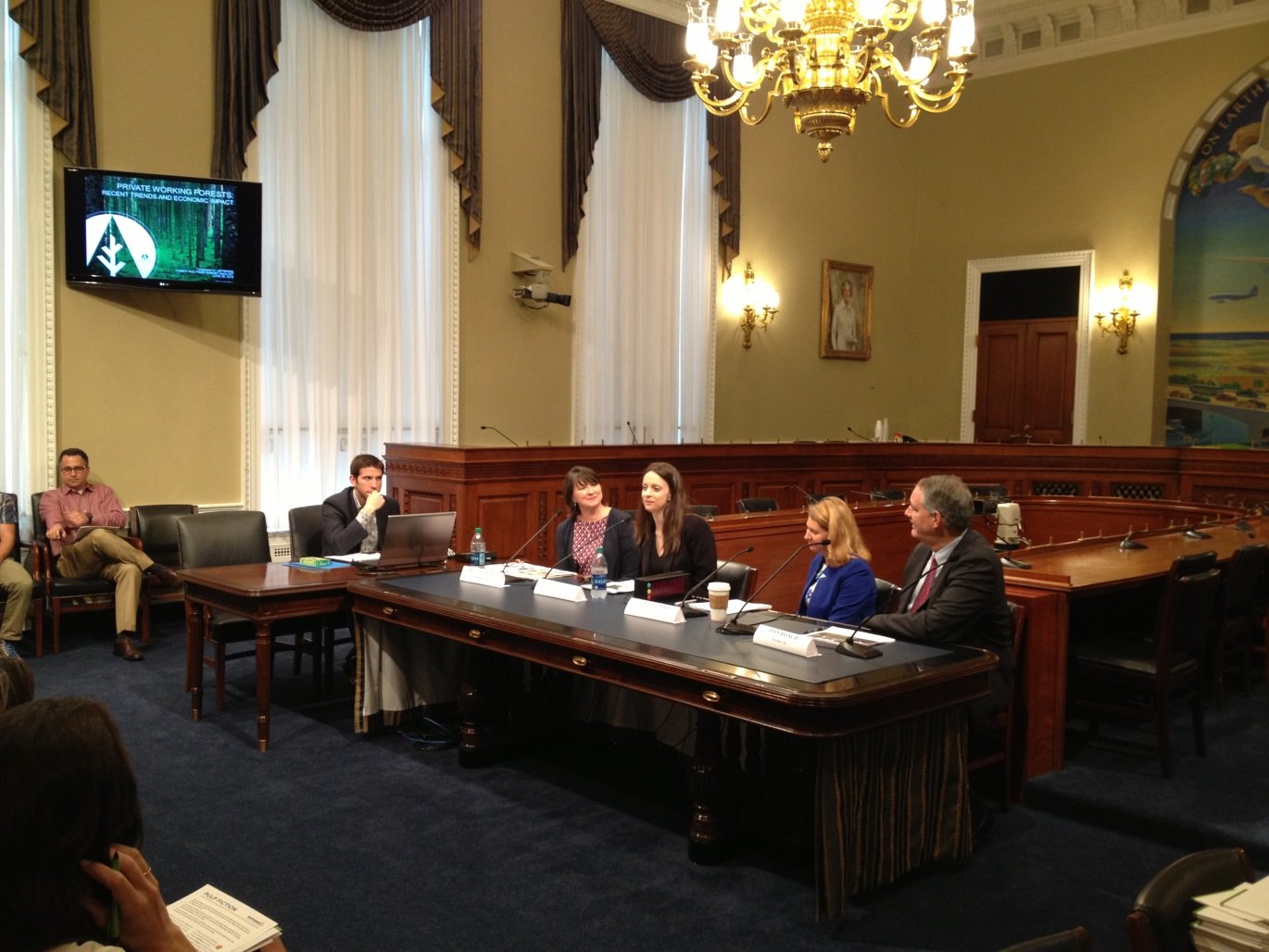
Earlier this week, I traveled to Washington D.C. to participate in a Working Forests 101 panel to present findings from two Forest2Market reports that were commissioned by the National Alliance of Forest Owners (NAFO). The House of Representatives Working Forest Caucus organized the panel to educate Congressional staffers on the operational practices, public-private interfaces, and benefits of working forests— forests that are actively-managed to produce forest products. The Working Forest Caucus is a bipartisan forum to discuss government policies that promote and preserve working forests in the United States.
I was pleased to participate in the panel on behalf of Forest2Market, whose mission is to empower participants in the wood product supply chain to make exponentially better decisions. My co-panelists included Bettina Ring, the State Forester for the Commonwealth of Virginia, and Dan Roach, the Director of Public Affairs for Rayonier, Inc. Jane Alonso, Vice President for Government Relations at NAFO, moderated the panel.
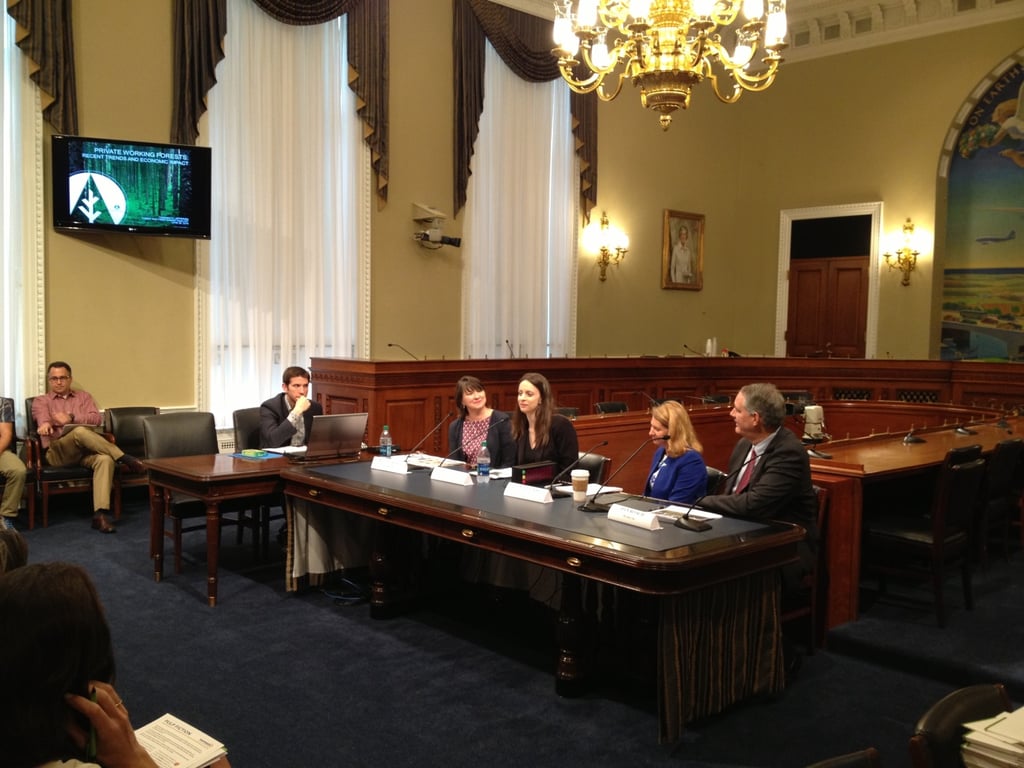
Left to Right: Bettina Ring, Hannah Jefferies, Jane Alonso, Dan Roach
Attendees learned that roughly three-fourths of working forests are privately-owned, and private owners run the gamut from small family tree farmers to major corporate owners who own millions of acres. Working forests are capital-intensive, requiring significant investment before returns are realized decades later. As their investment matures, working forests are subject to unique risks, including fire, disease, insects and storm damage.
Working forests provide many benefits to our communities. They provide the raw material necessary to support over 1 million direct jobs in the forest products industry with payrolls totaling approximately $48.8 billion while also filtering our air and water, storing carbon and providing wildlife habitat. While federal and state forests do play a role in the supply chain, especially in regions with higher public land ownership like the Pacific Northwest and Midwest, our analysis indicates that most economic activity associated with working forests is attributable to private timberlands.
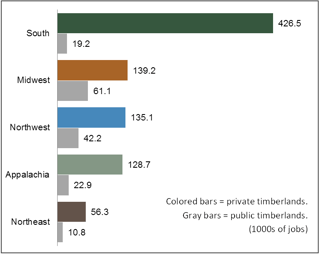 Private vs. Public Direct Employment by Region
Private vs. Public Direct Employment by Region
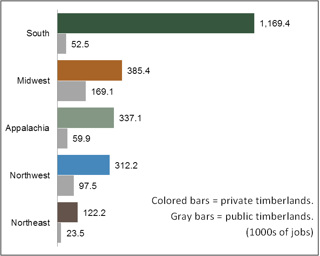 Private vs. Public Total (Direct, Indirect and Induced) Employment by Region
Private vs. Public Total (Direct, Indirect and Induced) Employment by Region
Our analysis of private working forests indicates that private owners manage their timberlands for sustainable timber production. Driven in part by reduced demand for sawtimber since the Great Recession, private timber inventories have increased by 6.2 percent (1.0 percent compounded annually) since 2008. Over this period, private owners grew an average of 40% more wood than they harvested annually.
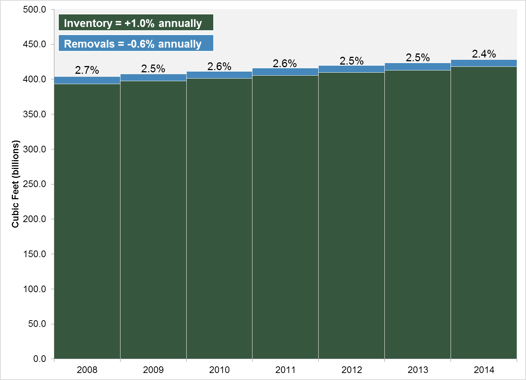
Total Removals Relative to Inventory, 2008-2014 – All Regions
History has shown us that demand for wood fiber from the forest products industry helps keep forested lands forested. In the absence of that demand, especially sawtimber demand, private landowners delay harvest in order to maximize the return on their investment. This has caused significant disruptions to forested lands in some areas, resulting in accumulating inventories and shifts in timber age class distributions.
Continued weak demand signals and uncertainty over future economic returns increase the likelihood that landowners will choose uses for their lands that do not involve growing trees, such as development or agriculture,[1] and therefore lack the many economic, environmental and health benefits of working forests. The Working Forest Caucus can help mitigate these risks by ensuring a favorable policy environment for forest landowners and the forest products industry that relies on working forests.
[1] See Alig, Ralph, et al. 2010. “Conversions of Forest Land: Trends, Determinants, Projections, and Policy Considerations.” General Technical Report PNW-GTR-802.





